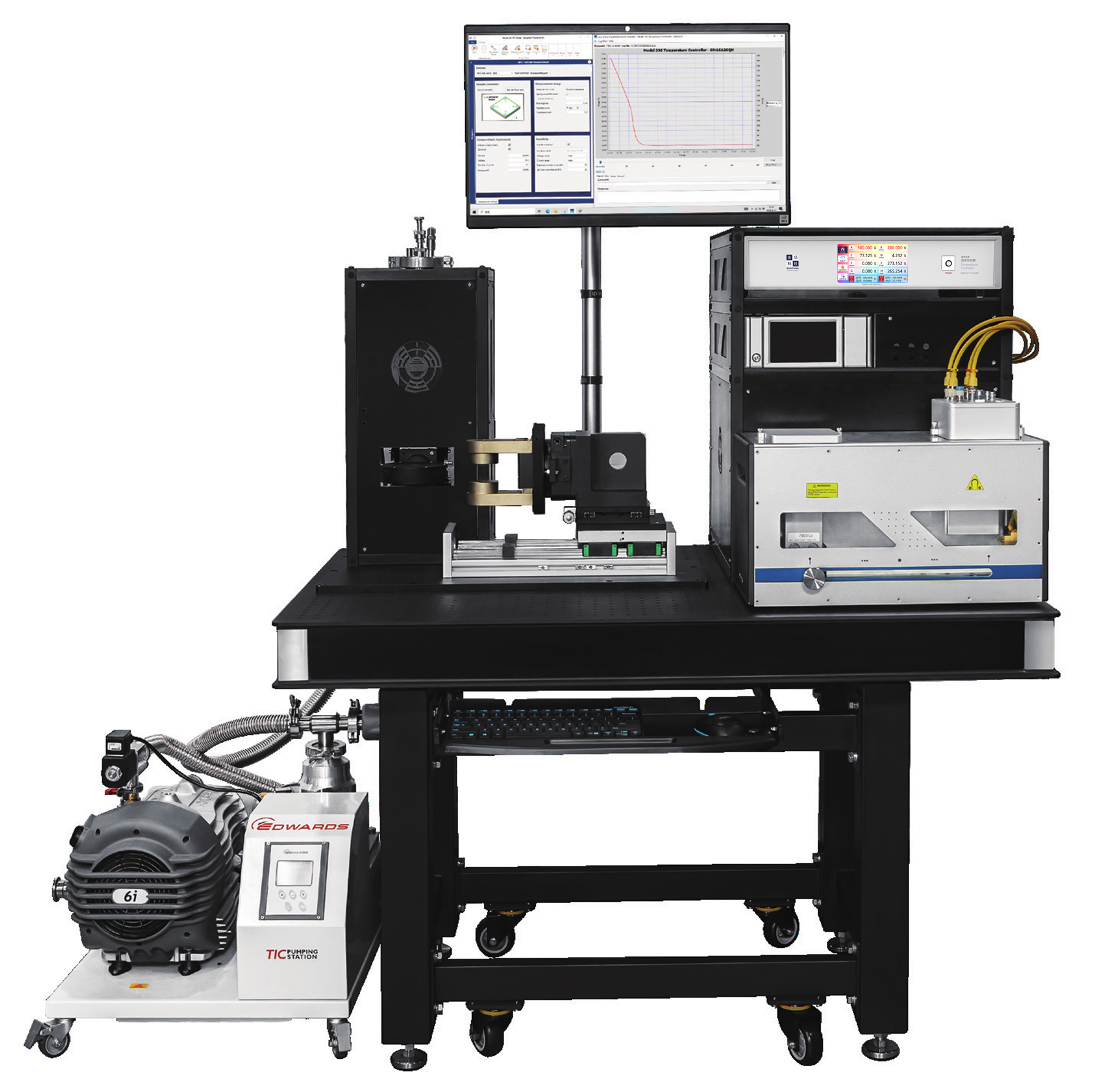Product Introduction
HSPM-05VT Variable Temperature Hall Test System consists of a Hall tester, a liquid nitrogen storage thermostat and a permanent magnet movement mechanism, which can provide a continuous variable temperature from 80K to 500K, 0.5T vertical magnetic field test environment for samples, and can test Hall parameters under variable temperature, which is a great convenience for the scientific experiments that need both low and high temperatures. This is a very cost-effective, but also the use of more users Hall test system, can realize a wide range of temperature testing, can also be equipped with other meters, as a pure temperature environment and magnetic environment for other tests.
System Features:
- Double layer sample holder design, the bottom of the optical sample holder, through the addition of four probes plus four terminals sample holder cover plate to realize the probe sample holder function. Terminal support
The addition of a six-probe holder allows for the simultaneous testing of Holba and Vanderbilt samples.
- Fitted with an adjustment bracket to adjust the vertical position of the thermostat.
- Magnet shifting device allows the permanent magnet to be moved back and forth and flipped over.
- The sample chamber can be opened quickly to change samples.
- Liquid nitrogen can be easily filled through the liquid nitrogen refill port on the top of the thermostat, and refilling liquid nitrogen will not affect the temperature control of the system.
- The thermostat is equipped with a liquid nitrogen flow adjustment lever, which can be used to adjust the thermostat's cooling capacity.
- Leakage current is less than 1pA@1V when used with cryogenic coaxial cable and triaxial/SMA connector.
- Built-in heaters and sensors work with an external temperature controller to achieve variable temperature and temperature control of the cryostat.
Test Material:
- Thermoelectric materials: bismuth telluride, lead telluride, silicon germanium alloy, etc.
- Photovoltaic materials/solar cells: (A silicon (monocrystalline silicon, amorphous silicon))
CIGS (copper indium gallium selenide), cadmium telluride, chalcogenide, etc.)
- Organic Materials: (OFET, OLED)
- Transparent Conductive Metal Oxide TCO: (ITO, AZO, ZnO)
IGZO (Indium Gallium Zinc Oxide), etc.)
- Semiconductor materials: SiGe, InAs, SiC, InGaAs, GaN,
SiC, InP, ZnO, Ga2O3, etc.
- Two-dimensional materials: graphene, BN, MoS2, etc.


